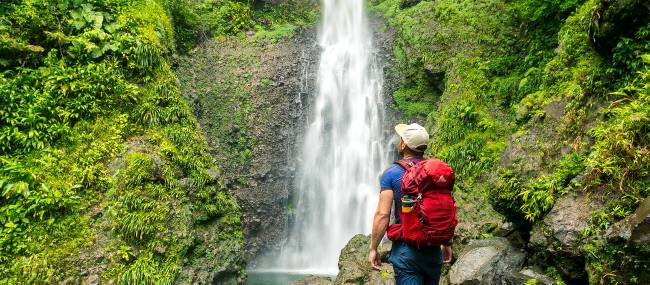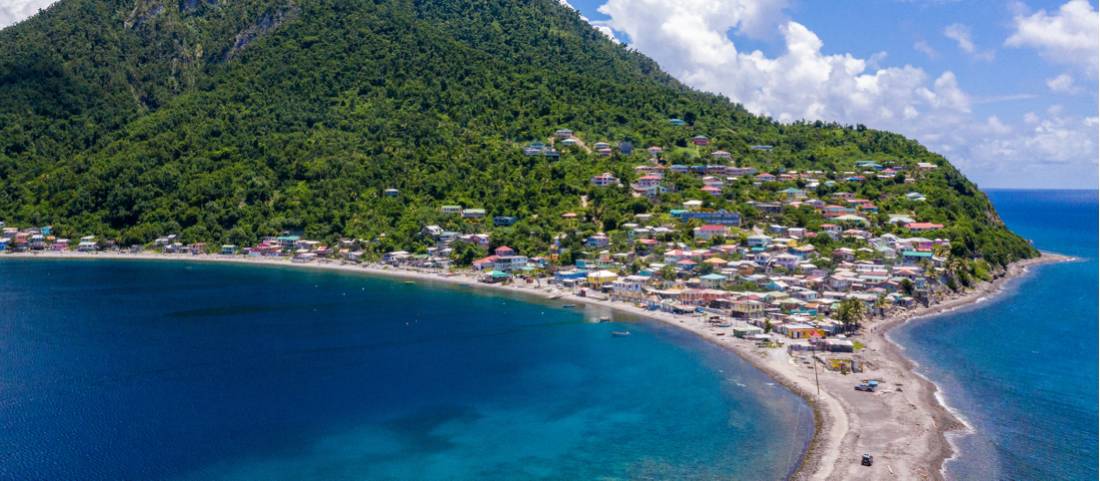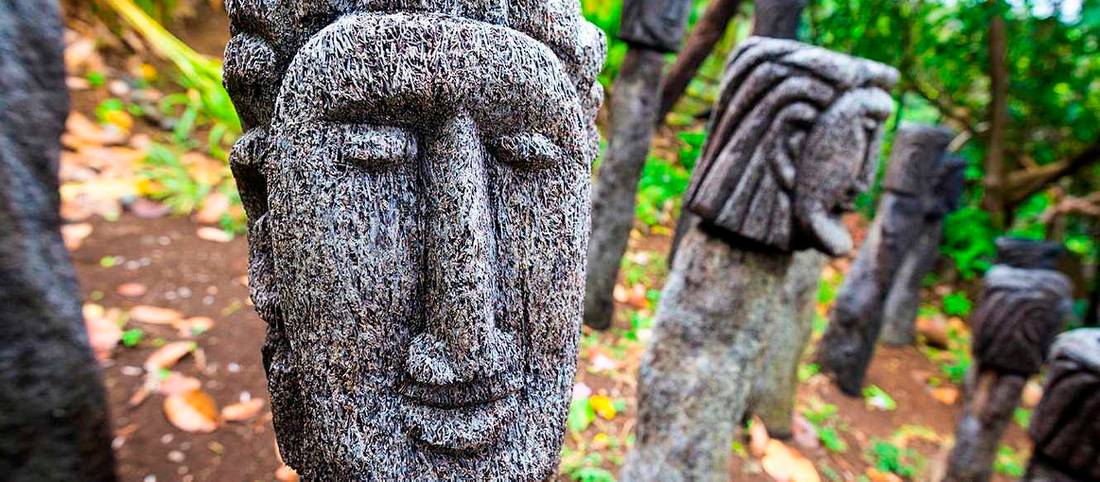
Hiking the Waitukubuli National Trail in Dominica
Blog home / Hiking in the Caribbean: Introducing the ‘Nature Island’ of Dominica
Waitukubuli National Trail is the first and only long-distance walking trail in the Caribbean
Dominica has a vast network of hiking trails that suit all interests and levels of ability. Most trails traverse through diverse natural habitats such as rainforest, montane thicket or elfin woodland, which makes the scale and diversity of hiking in Dominica unique to the Caribbean region.
World Expeditions has relaunched its tour featuring the island’s iconic Waitukubuli National Trail. Colin Piper, CEO Discover Dominica Authority, explains to us what makes the ‘Nature Island’ the top destination for a walking holiday in the Caribbean.

Where exactly is Dominica?
Different from the similarly named Dominican Republic, English-speaking Dominica (pronounced 'Domineeka') is an island country in the West Indies, between Guadeloupe and Martinique. Although there is no direct service from the UK or Europe, the island is easy to reach. It is only a short flight from other popular Caribbean destinations such as Saint Lucia, Antigua and Barbados, as well as the Express des Îles ferry, which connects Dominica with Martinique, Saint Lucia and Guadeloupe.
How is Dominica different from other islands in the Caribbean?
Dominica offers the ultimate alternative, secret Caribbean escape – with black sand beaches and mountainous landscape making the perfect place for trekking through breathtaking scenery and wild nature. Over the years it has differentiated itself as a holiday spot for adventure seekers, nature lovers and anyone who loves hiking in the Caribbean, an image that was firmly established following the launch of the Waitukubuli National Trail.
What is the Waitukubuli National Trail?
The Waitukubuli National Trail is the first and only long-distance walking trail in the Caribbean (Waitukubuli is the name of Dominica in the indigenous Kalinago language, meaning “tall is her body”). It is 115 miles long and crosses the entire island, from the southern fishing village of Scott’s Head to the scenic Cabrits National Park on the northern coast. It is divided into 14 segments of various lengths and difficulty, however each section is designed to be completed in one day.
What is the scenery like while trekking?
There is a reason why Dominica is nick named the ‘Nature Island’. Along the way, hikers encounter a varied canvas of contrasting landscapes, from rugged mountains to green rainforests, dramatic gorges to spectacular waterfalls, and coastal cliffs to rivers with crystal clear waters. Along the island’s trekking paths, you might spot endemic Amazonian parrots native to Dominica – the Sisserou and Jaco – along with over 150 other colourful species.
What is the weather like?
Dominica has two seasons: dry (November-May) and rainy (June-October); however, rain can be expected any time of the day, even during the dry season. But these are short bursts of warm, tropical rain (the locals call it “liquid sunshine”), after which the sun comes out again. It is the reason why Dominica is one of the most verdant islands in the Caribbean.

Are there any other popular treks on the island?
If you love hiking in the Caribbean, Dominica is a walker’s paradise with a vast network of hiking tracks throughout the island. If your heart is set on exploring on foot, Dominica’s signature walk is the day hike to the Boiling Lake. It is not part of the route of the Waitukubuli National Trail and will take you through the volcanic caldera of the Valley of Desolation to the second largest boiling lake in the world!
What other activities can you do in Dominica?
There is certainly more than trekking in Dominica! You can go snorkelling along the Champagne Reef, named for the bubbling waters rising from volcanic thermal springs on the ocean floor; enjoy a boat trip down the mangrove-lined Indian River, where scenes of the ‘Pirates of the Caribbean’ movies were filmed; take a Caribbean cooking class and learn how herbs and fresh organic products are used in Caribbean cuisine; or take a short boat ride to see the world's largest toothed animal, the mighty sperm whale, in its natural habitat along Dominica’s west coast.
Any surprising facts about the island?
Dominica has, of all the Caribbean islands, got the largest indigenous Carib Indian population, named Kalinago. If you would like to learn more about the island’s unique heritage and experience the local culture, make sure you visit Touna Kalinago Heritage Village. Founded by a former Kalinago chief, it is a living village that was created to introduce visitors to the traditions and customs of Dominica’s Kalinago people.

>>> If you feel inspired to go hiking in the Caribbean, read more about how you can Trek the Waitukubuli National Trail.
>>> If you want to get a taste of the 'Nature Island’ but are not ready yet to Trek the Waitukubuli National Trail, you can visit Dominica as part of Caribbean Experience: Antigua, Montserrat, Dominica & St. Lucia, the first-ever island hopping trip offered by World Expeditions in the Caribbean.
ALL IMAGES COURTESY OF DISCOVER DOMINICA AUTHORITY